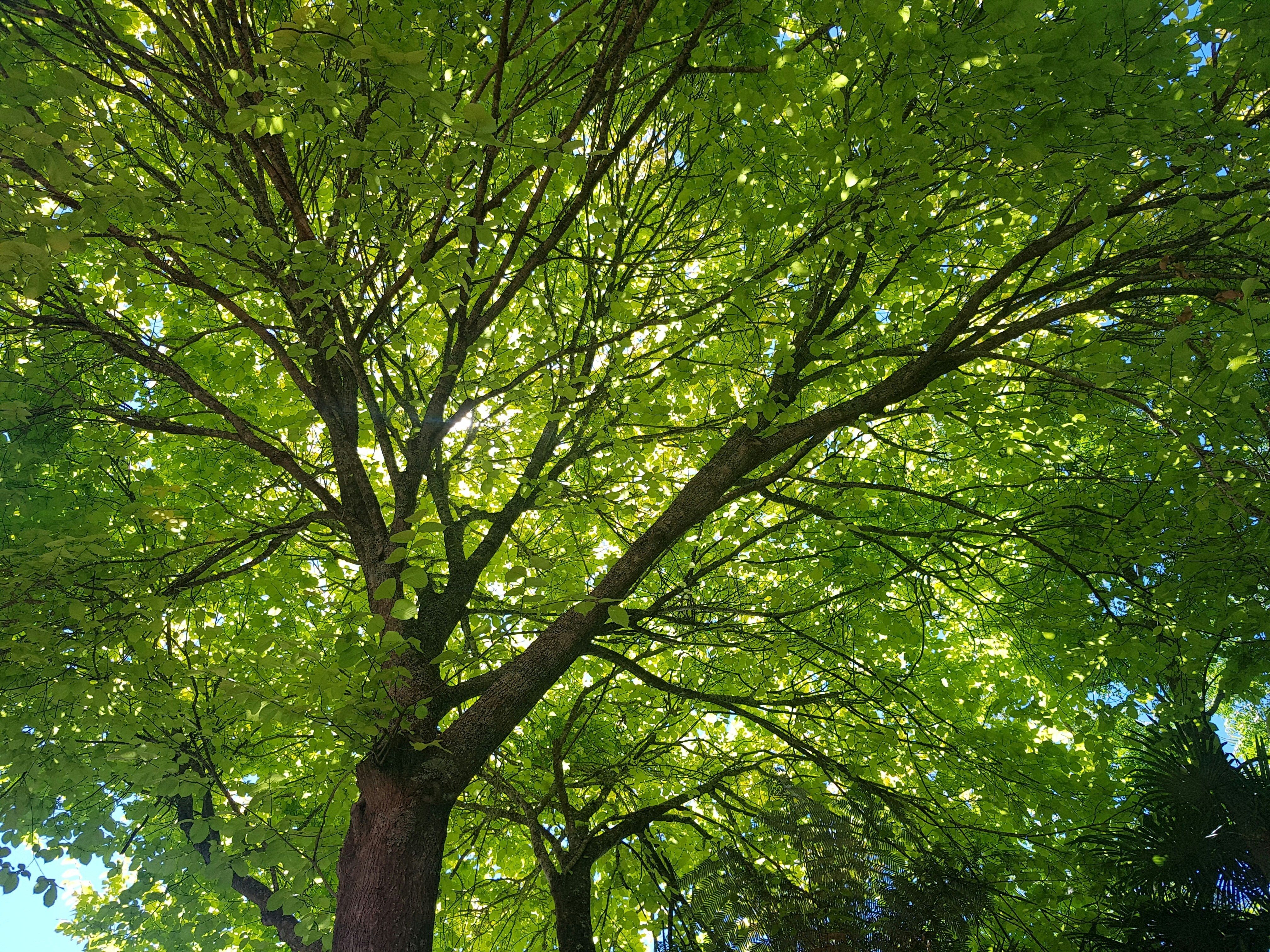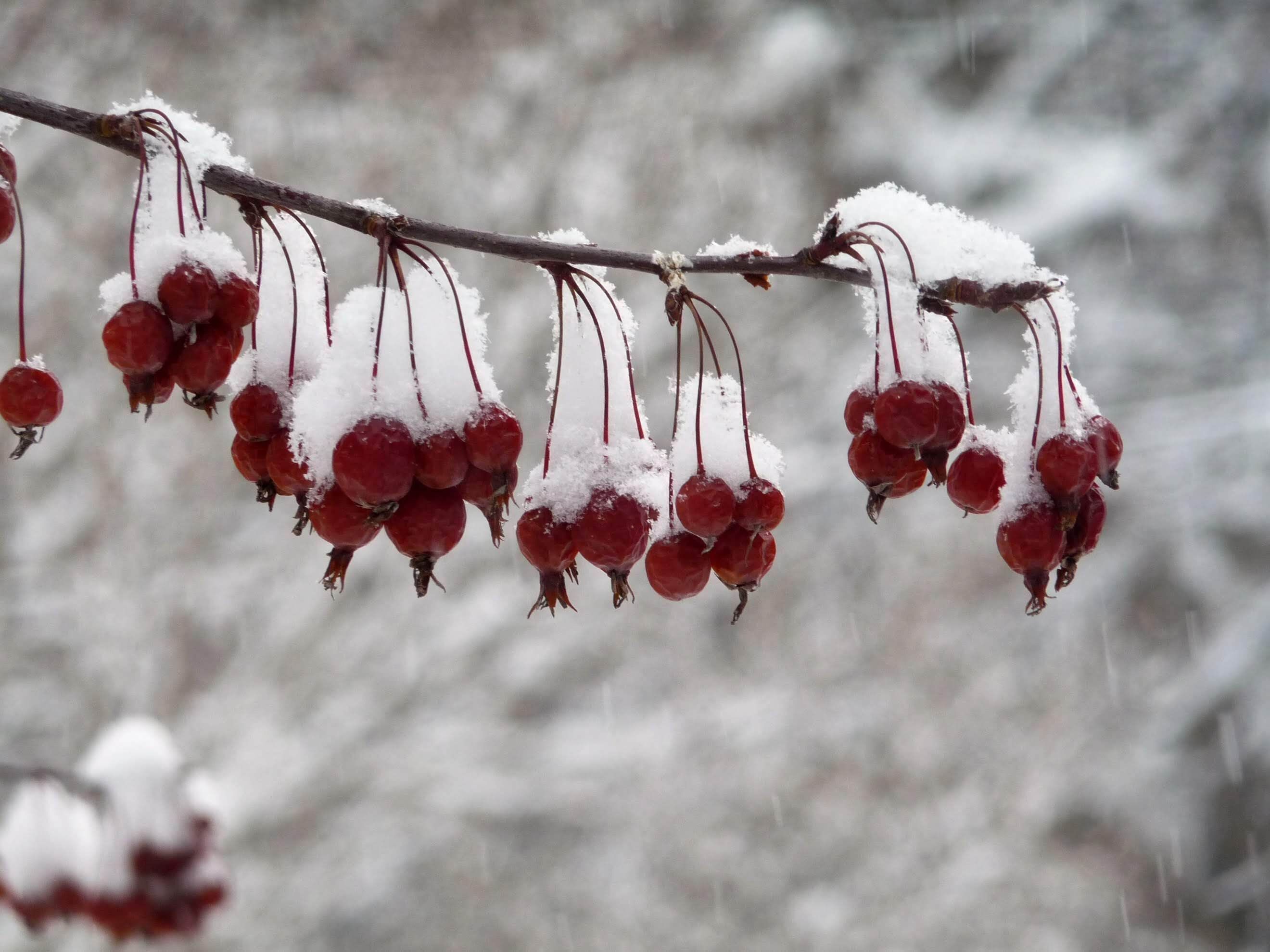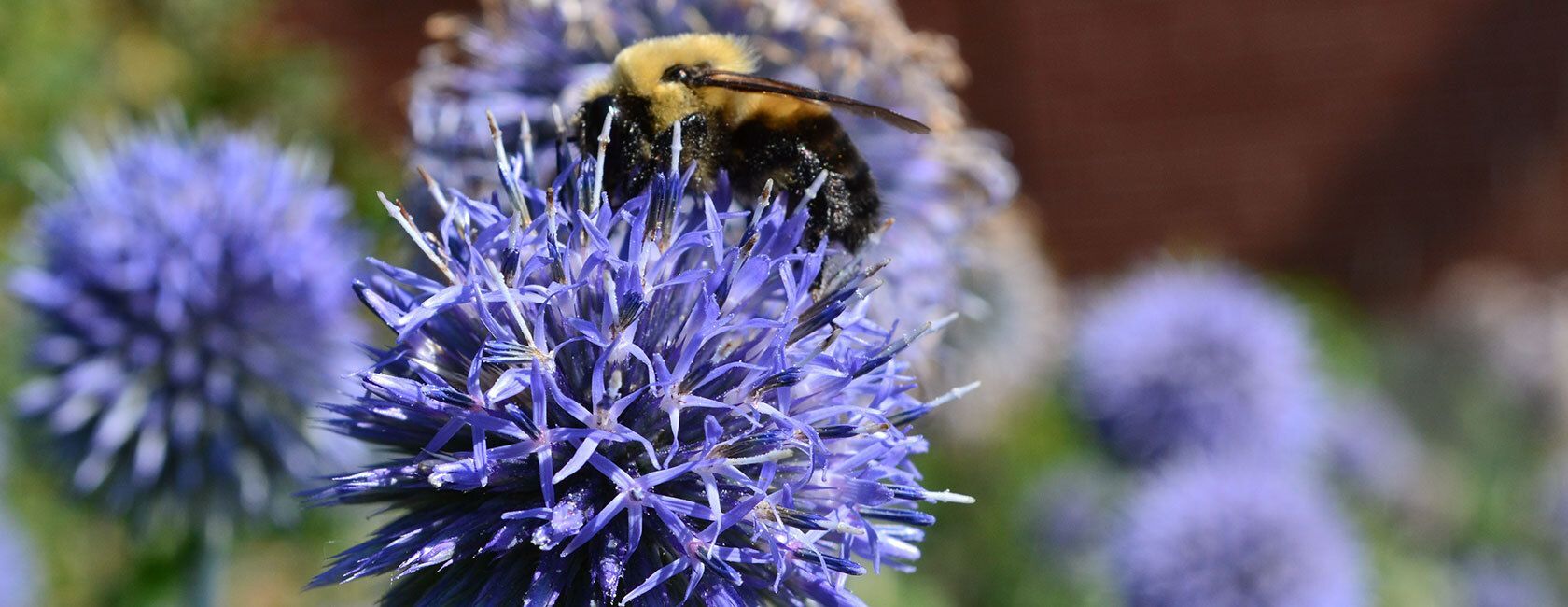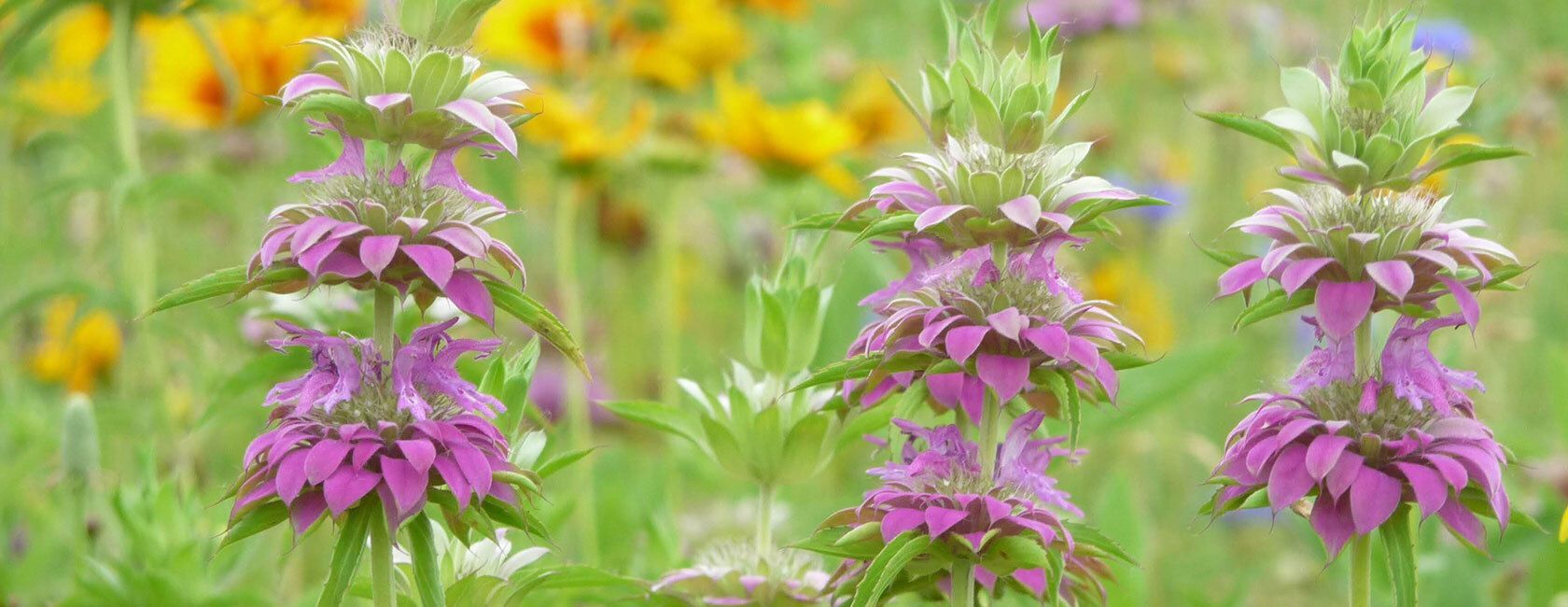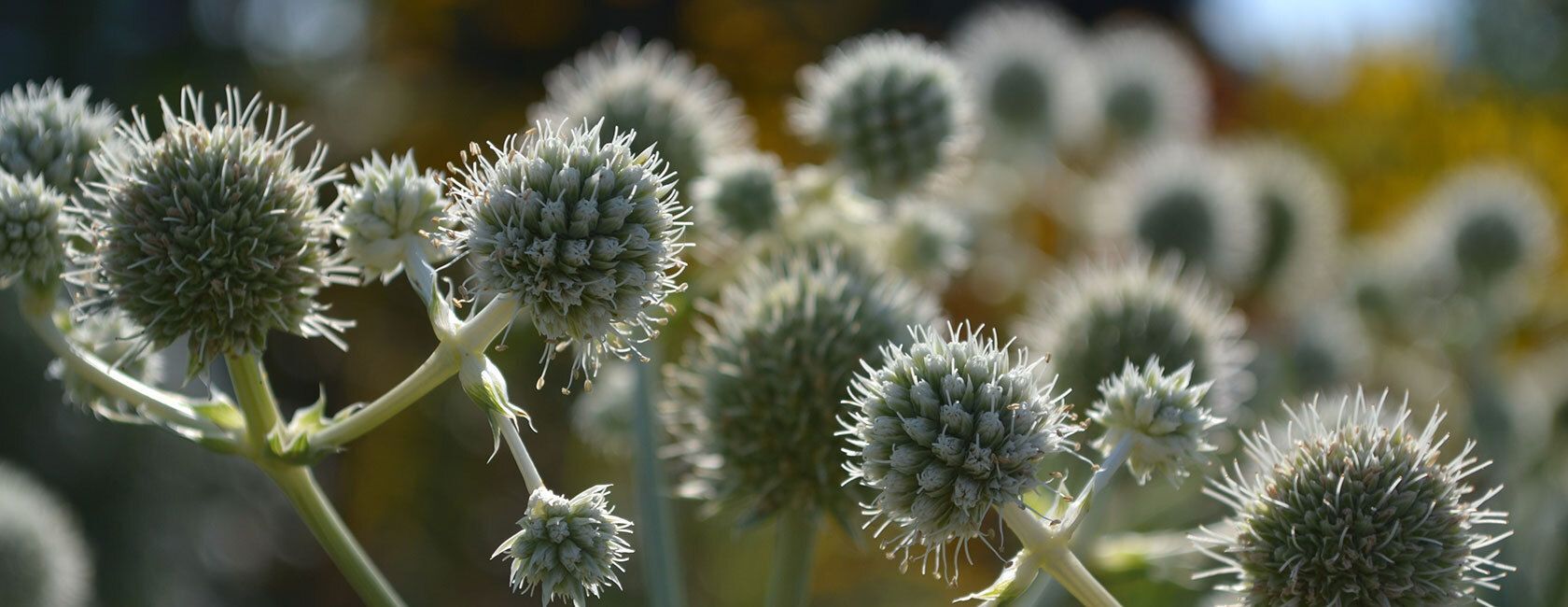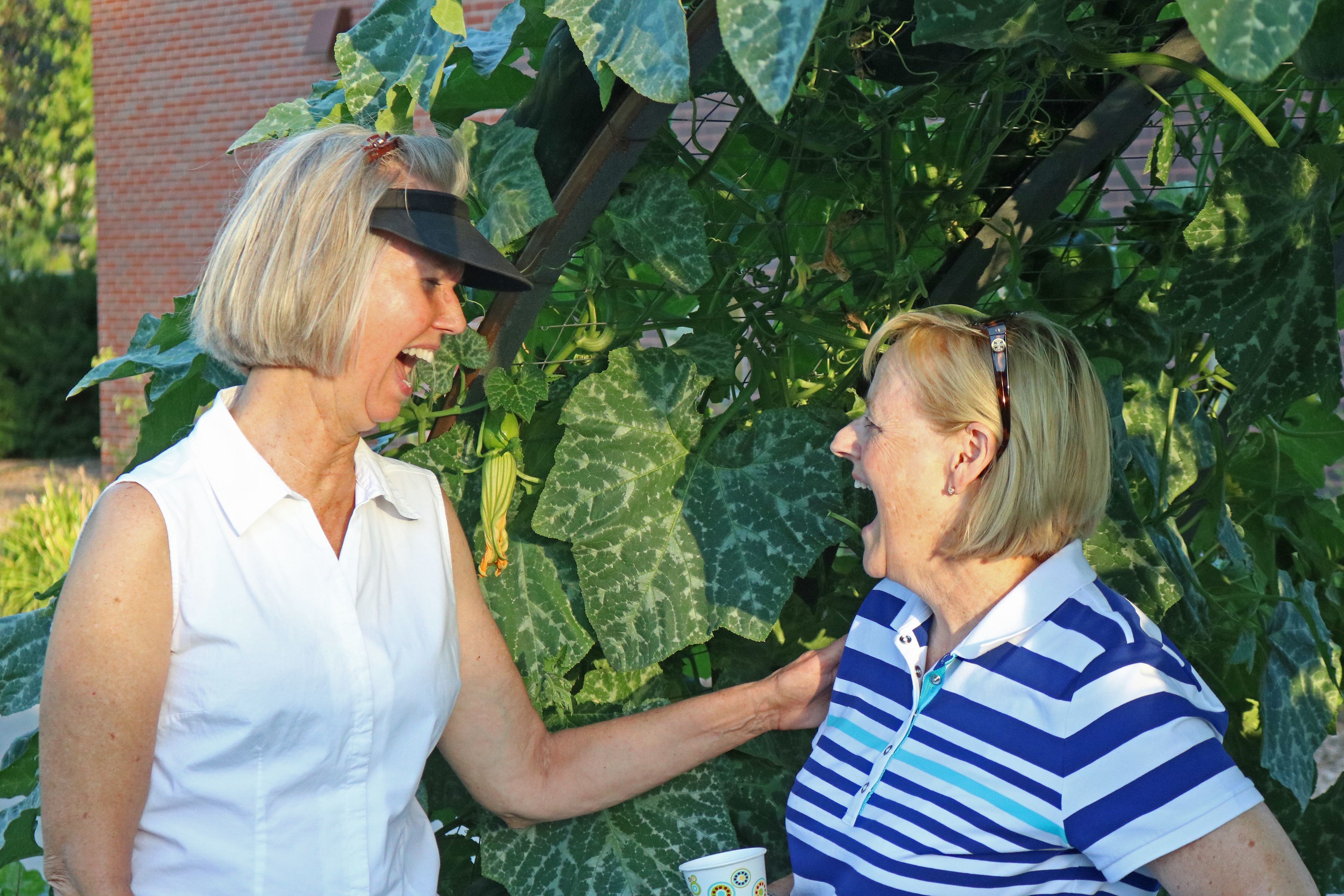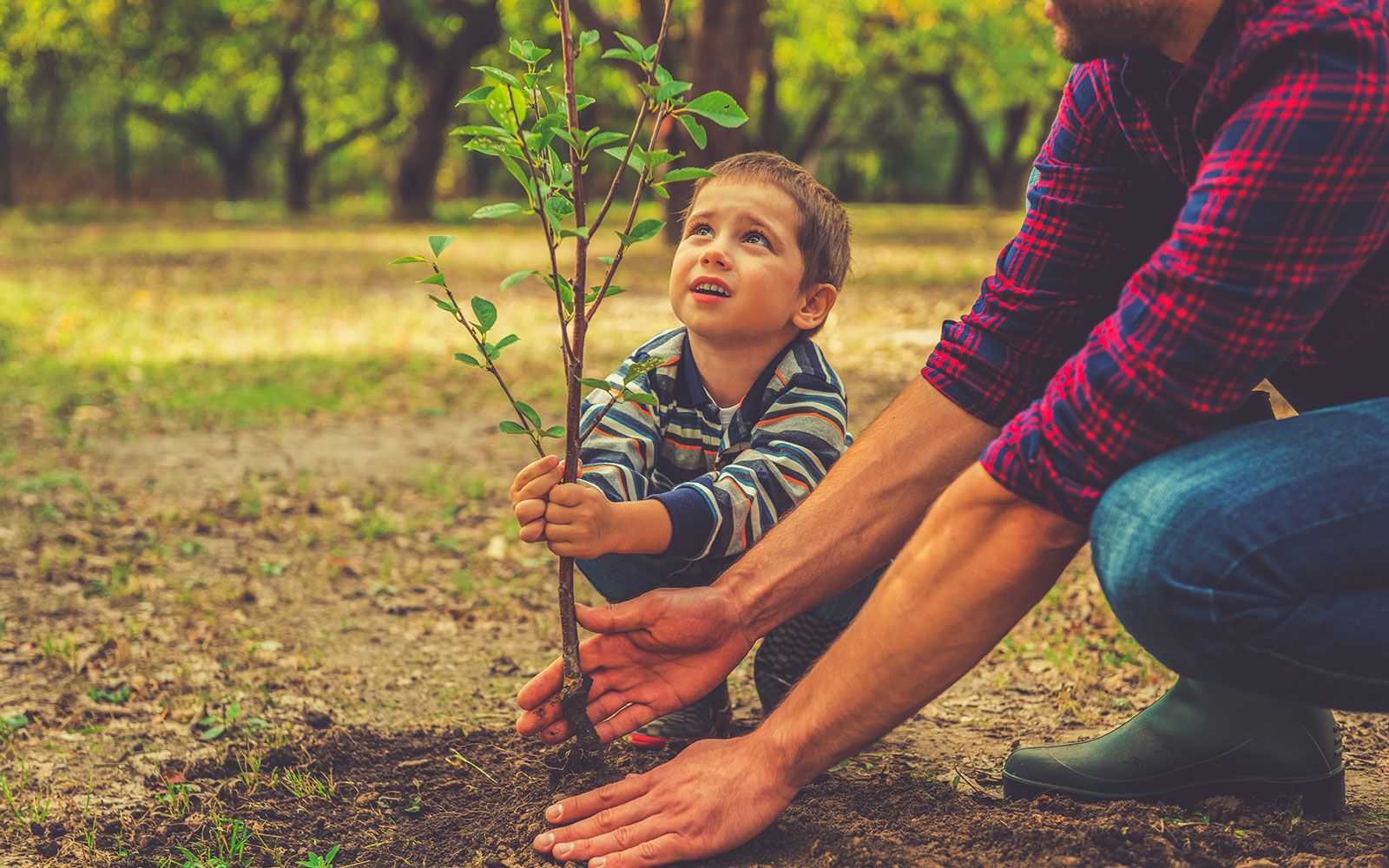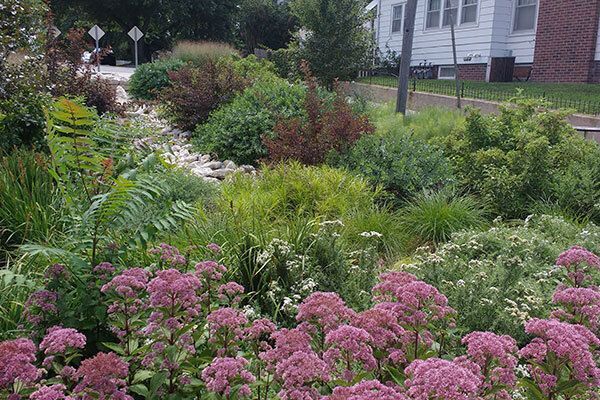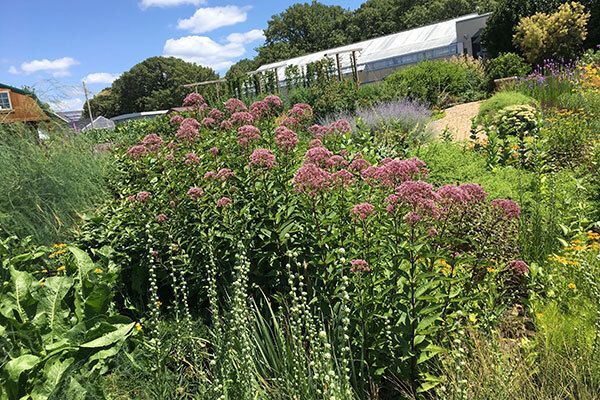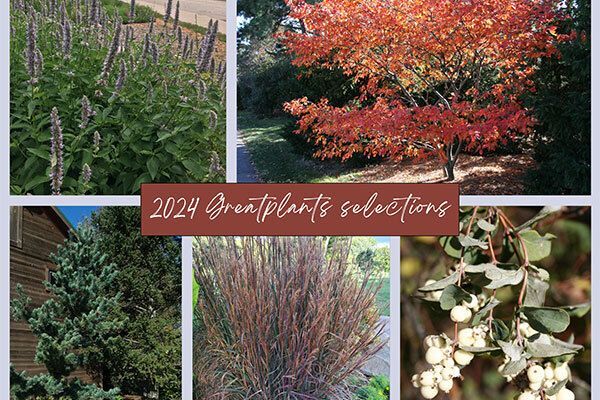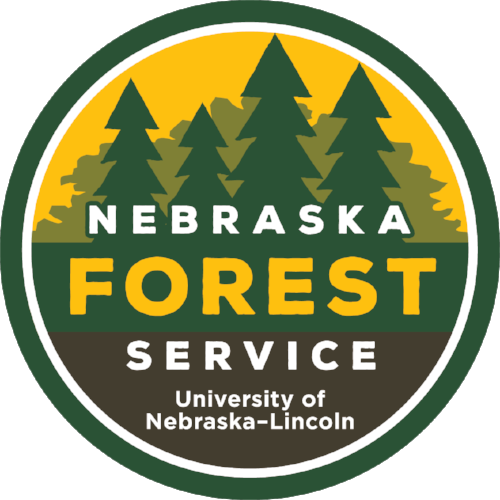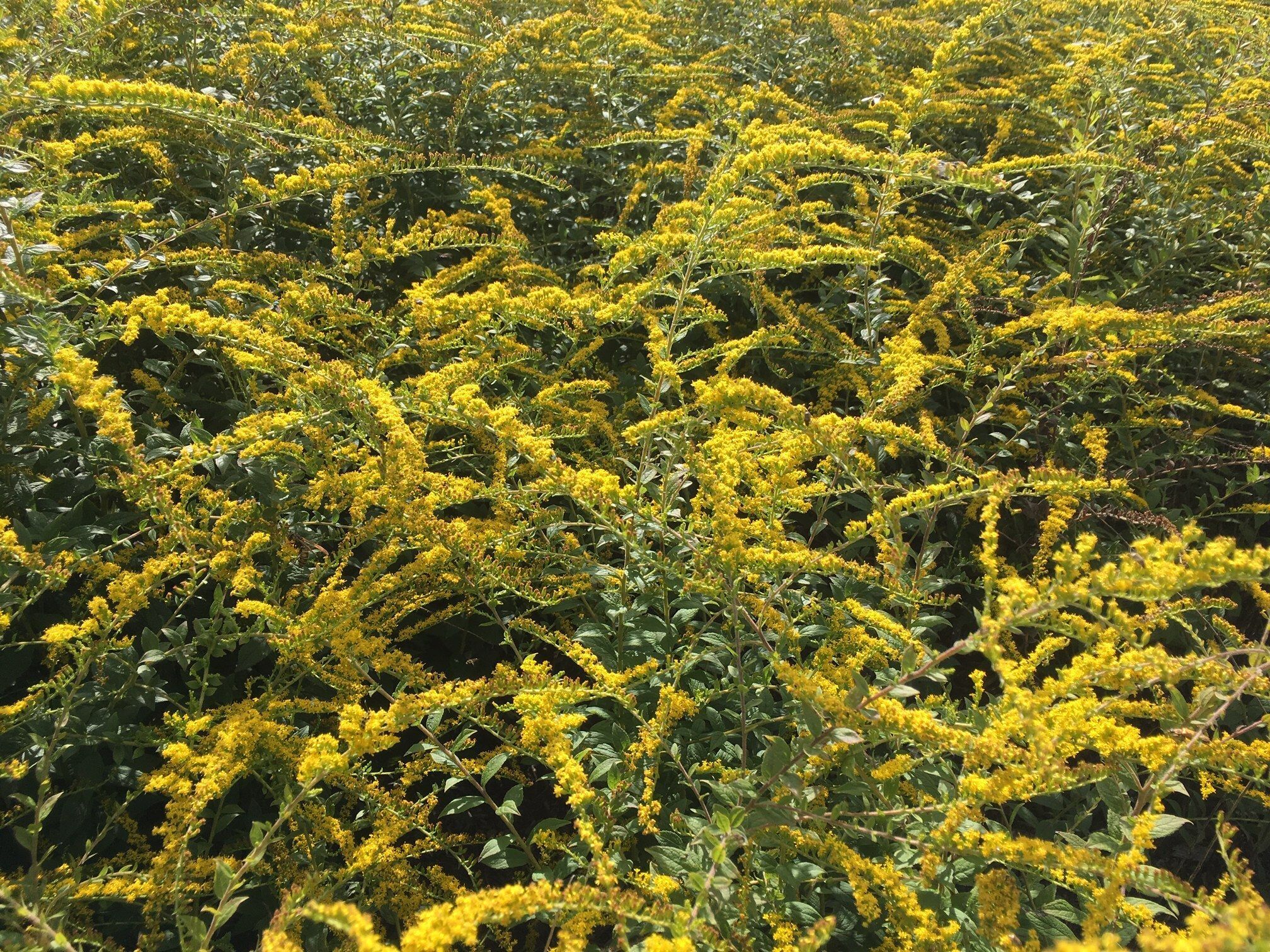
Photo: Solidago rugosa 'Fireworks' is a cultivar from a native plant (also sometimes refered to as a nativar).
Native. Nativar. Cultivar. If you’re confused by what’s what or which to plant in your garden, you’re not alone! Sustainable Landscape Specialist Sarah Buckley is here to help; she explains the differences and pros and cons of each below.
Native (straight species)
True native plants are grown from seed and cross pollinate freely, resulting in seedlings that may not look exactly like the parent. These plants are referred to as the “straight species” because they have no cultivar name and aren’t selected for specific traits.
Seed Strain
Seed strains are selected from unique, native populations, grown from seed and given marketable names. The desired traits are preserved by making sure the plants are only pollinated by others with the same traits. While this selective pollination still limits the genetic pool, it allows for more variation than a cloned cultivar.
Cultivar
Cultivars are selected for a particular color, shape or disease resistance. Many cultivars are selected and then propagated by vegetative cuttings, division or tissue culture by growers in nurseries. These plants are clones of the original and can come from either native or non-native plants. If grown from seed, they would not have the characteristics they were chosen for. These plants are recognized by their scientific names, followed by their cultivar name in single quotation marks – for example: Solidago speciosa ‘Wichita Mountains’.
Nativar
Often native plants available at local nurseries are referred to as a “nativar,” which is a made-up name to refer specifically to a cultivar that comes from a native plant. A nativar may be a cultivar or a seed strain, but it means that the plant has been selected for a specific trait. Because a nativar is a type of cultivar, it can also be recognized by the fact that its scientific name is paired with a cultivar name in single quotation marks.
One thing to remember: a nativar is always a cultivar, but not all cultivars are nativars (because some cultivars come from non-native plants).
Also, it can be difficult to tell the difference between a cultivar/nativar and a seed strain because there is no difference in their names; both carry the cultivar name in quotes. It’s not an intentional trick; nurseries are in business to market and sell plants. Consumers are more likely to notice and purchase a native plant called ‘Fireworks’ goldenrod than “rough-stemmed goldenrod.”
Benefits and Drawbacks
Cultivars that come from native plants (nativars) are often snubbed by gardeners striving for a native landscape, but many solve challenges that allow us to grow healthy native plants in an urban setting.
For example, Monarda—beebalm—is very susceptible to powdery mildew, and in a natural setting the plant and the disease live quite happily together. However, urban conditions favor powdery mildew, allowing it to take over and leave us with an unattractive plant. While fine in nature, we typically expect our garden and landscape plants to be more pleasing to the eye. So, for example Monarda ‘Grand Marshall’s’ is a cultivar from the native Monarda (thus a nativar) that is resistant to powdery mildew and works well in a backyard garden.
Plant breeders also make valuable species available to more gardeners. Joe Pye is a favorite of many pollinators and a beautiful native plant, but not everyone's garden can accommodate its towering 8-10-foot height. ‘Little Joe’ Joe Pye grows to about 4 feet high, allowing it to fit more easily into home gardens while still buzzing with bees of all kinds.
What to Plant?
We suggest incorporating a good mix of cultivars from native plants (sometimes called nativars) and straight species native plants when creating pollinator gardens for our urban landscapes. Many favorite nativars are not specifically bred; they are naturally occurring forms that were either discovered in nature or from a seedling picked out of a large group of plants. For example, Monarda, goldenrod, aster, Liatris and Echinacea have naturally occurring selections—popular, dependable favorites in the garden.
In the garden, choose nativars that have been selected for predictable size and shape, longer bloom time, disease resistance or a shorter growth habit to fit small gardens. Avoid too many nativars that have double flowers or significantly altered color. When the flower is the focus of the selection, they are often sterile (no pollen) or unrecognizable to pollinators.
There has been very little research investigating whether a nativar’s benefit to pollinators is equal to the true native. Annie White, a Ph.D. student at the University of Vermont, is researching the attractiveness of native plant cultivars versus straight species native plants. She chose to compare anise hyssop, (Agastache foeniculum) to the selection ‘Golden Jubilee.’ The ‘Golden Jubilee’ hyssop, selected for chartreuse-colored foliage, had just as many flowers, nearly identical bloom time and an equivalent number of recorded visits by pollinating insects.
Some gardeners shy away from straight species plants because they can be less predictable in their size, have a shorter bloom time or tend to flop. Especially in a public landscape, using straight species native plants can require a shift in design style, but it is important that we continue planting straight species natives when possible. When plants are allowed to cross-pollinate freely, it preserves the genetic variation that allows plants to survive drought, pests and changing weather patterns.
By combining a mix of seed strains, nativars and straight species plants, we can “have it all,” so to speak. Nativars, including both seed strains and cultivars, provide reliable shape and color, while well-chosen straight species plants provide genetic variation and their own style of beauty.

